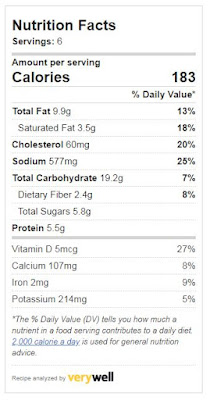Fruitcake. I'm young enough to have never encountered a fruitcake in the wild. Its reputation had been cemented before I was a child. Likened to paper weights and door stops, fruitcake has disappeared from tables. The theory that there is only one fruitcake in the world and people just keep regifting it to each other has expedited its demise.
Still there are diehard fans who can't have Christmas if there is not a fruitcake and I'm apt to believe that the real reason for the demise is the cost and care they take to make in a world that increasingly values quick and cheap.
Fruitcake has a long history. Nutritionally dense and long lasting, fruitcake like mixtures date back to at least Ancient Rome, but the modern recipe has its roots in the Middle Ages. Richard Briggs includes a recipe for "Plum Cake" in his 1788 cookbook The English Art of Cookery that includes all the hallmarks of what we would call a fruitcake today. In 1840, Queen Victoria and Prince Albert's wedding featured a highly decorated, 300 pound fruitcake popularising the choice for many future brides. By the 1860s fruitcake was a classic choice for Christmas and weddings.
This is my first attempt to make a fruitcake so I tried to find a simple recipe. I asked on Facebook what time period fruitcake I should make and many wanted to see a Civil War Fruitcake. So here it is. The recipe is from Godey's- the June edition as fruitcakes generally need to cure from 1 month to 6 months for the best flavors.
Rich Fruit Cake.—One pound of sugar, three-fourths of a pound of butter, worked together until very light; one wine-glass of brandy, one dozen ground cloves, half a nutmeg, a teaspoonful of ground cinnamon, ten eggs beat separately, the yolks to be used first, and afterwards the whites, one-fourth of a pound of sliced citron, two pounds of washed currants rubbed in flour and mixed in the cake with one pound of raisins cut fine, and one seeded and left whole or cut once, and one pound of sifted flour; stir in the citron, currants, and the chopped raisins, and lastly, the flour and whole raisins alternately; bake in a moderate oven in deep basins two hours. If the fire is strong, the heat should be decreased the last hour. Line the basins with buttered paper, and keep a piece over the top of the cake. Frost it and it will keep two months or longer if desired.
I ended up lining my pans with buttered paper and frosting my cake. I was interested in using rum to keep my cake soft so I did not try frosting it before storing it.
Civil War Fruit Cake
- 2 Cups Butter
- 2 Cups Molasses
- 2 Cups Sugar
- 6 Eggs
- 2 teaspoons Baking Soda
- 1 Pound Raisins, Chopped
- 1 Pound Currants, Chopped
- 1/2 Pound Citron, Chopped
- 1 teaspoon Salt
- 1 Tablespoon Nutmeg, Ground
- 1 Tablespoon Cinnamon, Ground
- 1 teaspoons Cloves, Ground
~ 6 Cups of Flour
Instructions:
Preheat oven to 325°F. In a mixing bowl, cream the butter, molasses sugar, salt, nutmeg, and cloves. Add a little water to your fruits and mix in a little flour to coat the fruits. Alternatively add fruits and mix in flour to make a stiff batter. Beat your eggs and fold in at the end. Line your pans with buttered paper. Fill pans 2/3 of the way with batter and cover the tops with greased paper. Bake for 1 hour to 2 hours depending on pan size. Test the middle with a skewer.
This made 6 3x6 sized loaves. I baked them for an hour and 15 minutes.
 |
| Sorry for the cell phone pics. |
The day after they were baked, the tops were hard. I used a skewer to poke holes half way down into the cakes and spooned rum over. I left the paper on and wrapped the cakes in plastic wrap then put them in a plastic container. Historically they would be wrapped in paper and kept in an airtight tin but I couldn't find one big enough. Some people wrap them in alcohol soaked cheesecloth first. I tried coating them with rum weekly unless they seemed soggy, then I skipped a week.
It is rumored you can keep fruitcake good for up to 25 years by storing them in powdered sugar. They apparently do last forever. There was one found from Robert Falcon Scott's expedition to Antarctica in the early 1900s that still appears to be edible and one being passed down from the Ford family for over a century.
There are 6 of my fruitcakes floating around in the ether and I hope to update you after everyone has tried them. I won't be trying mine until Christmas Day but will update with a photo when I cut mine open. I gave everyone the drunken fruitcake disclaimer. Can't get drunk off cake? Check out this article by Stuart Heritage who decided to not only answer the question "Can you get drunk off of fruitcake?" but the question of "How drunk?" I hope everyone has a good holiday and I'd love to hear if anyone tries this recipe.
UPDATE: I've updated with a picture of the inside. We ate this on Christmas and it was overall not bad. I didn't pour a final bit of rum on it before icing it I wish I had. It felt kind of soggy on the top and I didn't want it to be soggy. The flavor was nice an mild. I thought the flavors would be strong but they were very delicate and the fruits practically melted into the cake. The raisins definitely disappeared! I have one cake left so I'm going to keep feeding it and test it in 6 months to see if the flavor changes any.



















